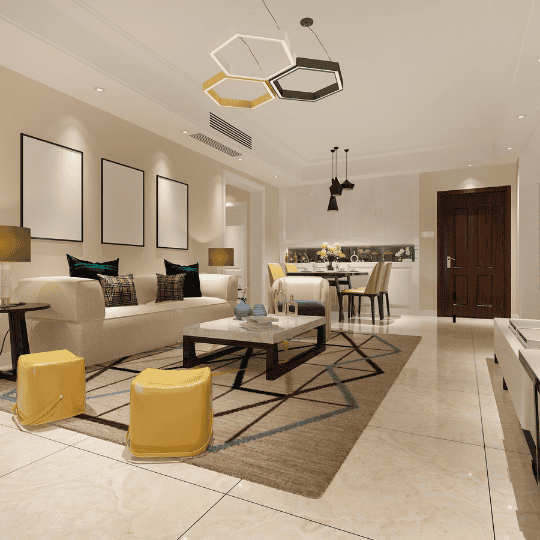How to Make Your Home Feel Bigger Without Knocking Down Walls
Table of Contents
You don’t need a full renovation to make your home feel more spacious. With a few smart changes, you can open up your living space, reduce clutter, and bring in more light, making even small rooms feel bigger and more comfortable. Here’s how to create the illusion of more space inside and out.
Declutter Your Space
Start by decluttering; nothing makes a home feel smaller than too much stuff. Go room by room. Remove items you don’t use or need, clear surfaces, remove excess furniture, and organize storage areas. Use closed storage—drawers, cupboards, baskets—to keep everyday items out of sight.
Open shelving can work too, but keep it tidy and minimal. You will be surprised how much larger a room feels when it’s clean and clear.
Choose Light Colors and Simple Designs
Choose light colors and simple designs. Dark colors absorb light and can make walls feel like they’re closing in.
Stick to lighter tones—white, beige, pale grey, or soft pastels—for walls, ceilings, and large furniture. Choose furniture with clean lines and slim profiles; avoid heavy, bulky pieces that take up visual space. A glass coffee table, for example, will feel lighter than a solid wood one.
Use mirrors to reflect natural light and give the impression of depth. Placing a large mirror opposite a window can double the amount of light in a room.
Incorporate Multifunctional Furniture
Use multifunctional furniture. If space is tight, every piece of furniture should work harder. Look for ottomans with storage inside, beds with drawers underneath, and fold-out tables or desks. This reduces the need for extra storage units or surfaces, keeping the room open and flexible.
Maximize Vertical Space
Maximize vertical space. Make use of your walls. Tall bookshelves, mounted lighting, and vertical storage can draw the eye upward and free up floor space. In small kitchens or entryways, consider hooks or hanging organizers for coats, bags, or utensils. This keeps the ground clear and helps with flow.
Let in Natural Lighting
Let in natural lighting to instantly open up a room. Keep windows clean and clear of heavy drapes. Use sheer curtains or blinds that let sunlight filter through. Avoid blocking windows with furniture. If privacy is a concern, use frosted film or light-filtering shades. Add extra lighting in darker corners; floor lamps, wall sconces, and LED strips under cabinets can help brighten areas that feel closed in.
Extend Your Living Space Outdoors
Extend your living space outdoors. If your indoor space is limited, think about how to use your garden or patio as an extension of your home. Even a small outdoor area can serve as an extra room. Create a seating zone with compact furniture and outdoor cushions. Add potted plants or string lights to make it feel more inviting. A fire pit can become the centerpiece of your outdoor setup; it adds warmth, creates a social focal point, and makes your space usable year-round. Browse fire pits to find one that suits your space and style. By expanding your living area outdoors, you instantly increase your home’s usable space.
Final Thoughts
Making your home feel bigger doesn’t mean knocking down walls. It’s about clearing clutter, making smart design choices, and using every inch wisely—inside and out. From mirrors and storage furniture to outdoor seating and a fire pit, small changes can make a big impact. When your space feels open, organized, and bright, your home becomes more enjoyable every day.



